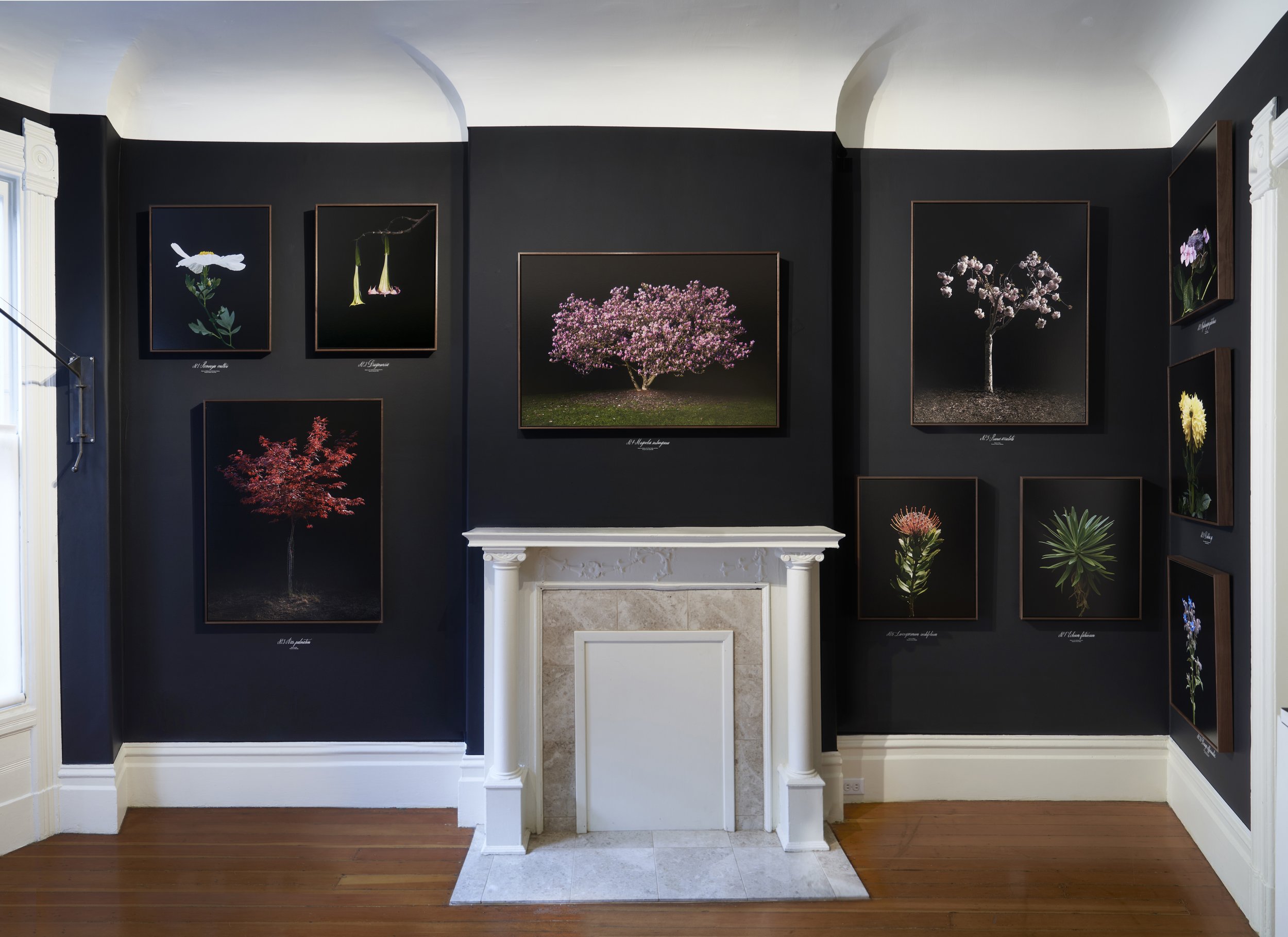Botanicae
Plant hunters over the centuries traveled to foreign lands to bring back exotic plants for commercial use throughout Europe. I first started to notice certain plants returning to life after a severe drought ended in California. In the spirit of discovery, I hiked through various neighborhoods to explore the plants in the SF Bay Area. A year-long exploration resulted in a deeper understanding of how humans and plants are inextricably linked, and the ways humans need to make sense of the natural world around them.
In this series plant specimens were photographed in situ, using natural light, and black backdrop to separate it from its natural environment. The installation of 15 plants and 4 trees evokes a modern rendition of an herbarium cabinet used to display plant specimens for scientific study. Hung on a black wall, each plant’s Latin name is handwritten in calligraphy along with its country of origin and location it was “found”. A large-format book accompanies the framed works containing short blurbs that describe the journey the plants made, the explorers who stole the plants from their country of origin, their indigenous histories, and the strange narratives that were told to validate their conquests. Historically these plants were status symbols in the private gardens of wealthy collectors. Over the centuries they have become common plants, whose incredible stories are often overlooked.
The plants become a window into all sorts of strange things humans have done throughout the ages. Their histories are our histories.
Gallery: The Jones Institute, San Francisco
Calligraphy: Maybelle Imasa-Stuklus








